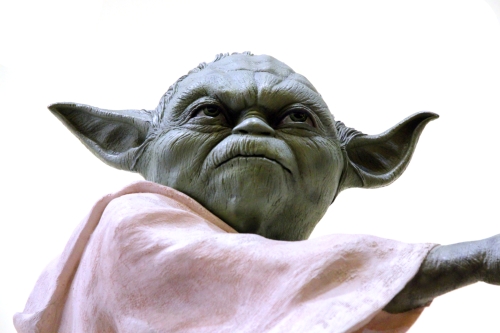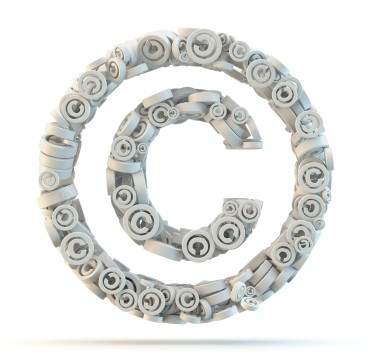 ©iStock.com/Brendan Hunter
©iStock.com/Brendan Hunter
By: Brian J. Meli
Once every year, the inner sci-fi geek in all of us gets a chance to reclaim a sliver of that wide-eyed wonder of youth, and unite with like-minded souls in a nostalgic embrace of the pop-culture phenomenon that imbued an entire generation with the solemn precept, “may the force be with you.” Thirty-seven years after the original Star Wars movie hit the big screen, May the 4th has become a force all its own—a day fans across the world come together to pay their respects to the galaxy’s most culturally significant space drama (apologies to Star Trek fans) and to celebrate its enduring legacy. The amplifying effect of social media has only intensified the day’s popularity, raising awareness among casual fans, while inspiring new generations of Star Wars disciples.
But May the 4th has become more than just a commemoration for the young at heart. It’s also a time when marketing managers begin thinking up innovative ways to honor the Star Wars legacy. Increasingly the day has become an opportunity for Fortune 500 companies—eager to connect with the movies’ legions of adoring fans—to link their brands to the Star Wars mystique; a fact that’s becoming more apparent with each passing year. Here’s just a small sampling of what some companies have done to mark the day on social media.
Paying homage to the Star Wars universe is nothing new. The franchise is famous for inspiring fan-created content from all corners of the universe; everything from street art to homemade short films. And the vast majority of it is unauthorized. The practice is so widespread that George Lucas, the creator of Star Wars, was forced to embrace it officially rather than risk alienating the loyal fan base that helped turn his obscure space opera into a cultural movement.
However, as Jedi Master Yoda was keen on saying, “always in motion the future is.” Changing the times are, and circumstances are very different now than when the original Star Wars trilogy was in its heyday. For starters, the Star Wars properties are no longer owned by Lucasfilm, Lucas’ eponymous production company, but by The Walt Disney Company, who purchased Lucasfilm in late 2012 and has since assumed the ambitious task of evolving the franchise for a new audience by investing heavily in its future success. For another, the power of the Internet and social media have taken the production and distribution of fan content to levels that not even the most force-sensitive Jedi could have foreseen in the early 1980s. Long gone are the days when only the kid down the block with the Boba Fett jet pack could share in your Star Wars obsession. Nowadays fan sites can generate huge cult followings, and fan films, fan art and remixes and mash-ups can rival the quality of the genuine articles. While this has unleashed a new wave of amateur creativity that in many ways has been good for the movie business—generating buzz and expanding interest among the general public—it’s also precipitated the need for rights holders to increase their vigilance.
So this year, as May the 4th approaches, it’s worth taking a few minutes to consider the legal implications of paying corporate homage to Star Wars. Contrary to the mantra of the brash, no-nonsense space smuggler Han Solo—whose catch phrase “never tell me the odds” endeared him to audiences—some risks are worth measuring before making the jump to light-speed. So here are a few things to consider before your company channels the force this May the 4th:



 and shutting down the illicit websites that notoriously traffic in all of the above. But there’s a new front in the war on intellectual property, one where the threat posed by counterfeited and pirated goods has quietly become just as insidious. Far from the big-box shelves, the online auctions and the Internet landing pages that have long been the front lines of this conflict; hidden in plain sight only a few taps away, lies a large and expanding commercial ecosystem rife with infringement activity—a place that, until recently, has operated largely outside the focus of brand enforcement officials. This relatively new and dangerous frontier is the mobile app marketplace.
and shutting down the illicit websites that notoriously traffic in all of the above. But there’s a new front in the war on intellectual property, one where the threat posed by counterfeited and pirated goods has quietly become just as insidious. Far from the big-box shelves, the online auctions and the Internet landing pages that have long been the front lines of this conflict; hidden in plain sight only a few taps away, lies a large and expanding commercial ecosystem rife with infringement activity—a place that, until recently, has operated largely outside the focus of brand enforcement officials. This relatively new and dangerous frontier is the mobile app marketplace.
 hearts and minds, part fair warning before punitive actions start raining down, the September initiative consisted of a salvo of choicely worded warning letters addressed to more than 60 U.S. companies, including 20 of the largest 100 national advertisers. The message contained in those letters was clear: advertising has changed dramatically, but advertiser’s disclosure obligations have not.
hearts and minds, part fair warning before punitive actions start raining down, the September initiative consisted of a salvo of choicely worded warning letters addressed to more than 60 U.S. companies, including 20 of the largest 100 national advertisers. The message contained in those letters was clear: advertising has changed dramatically, but advertiser’s disclosure obligations have not.
